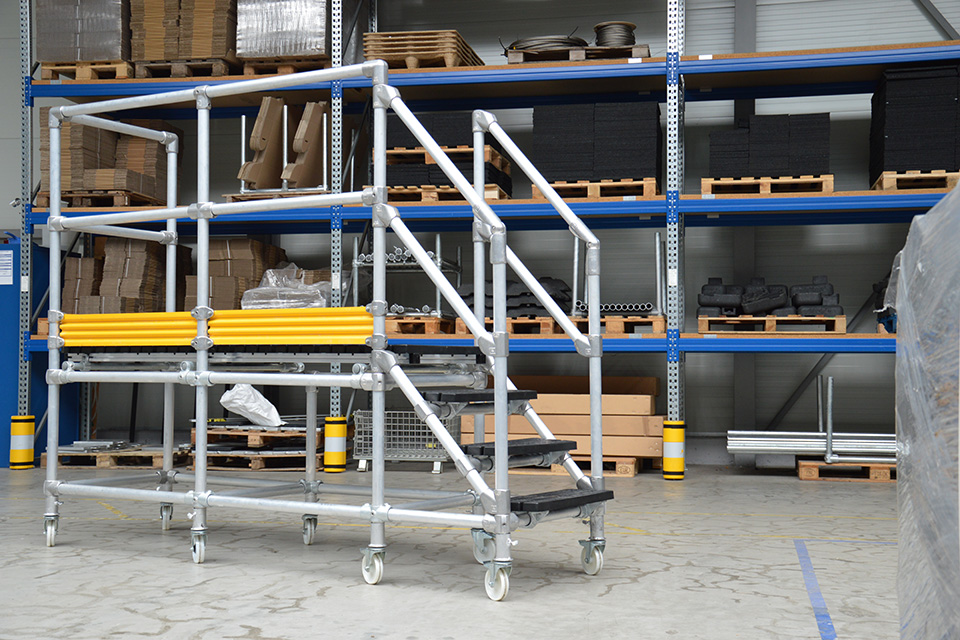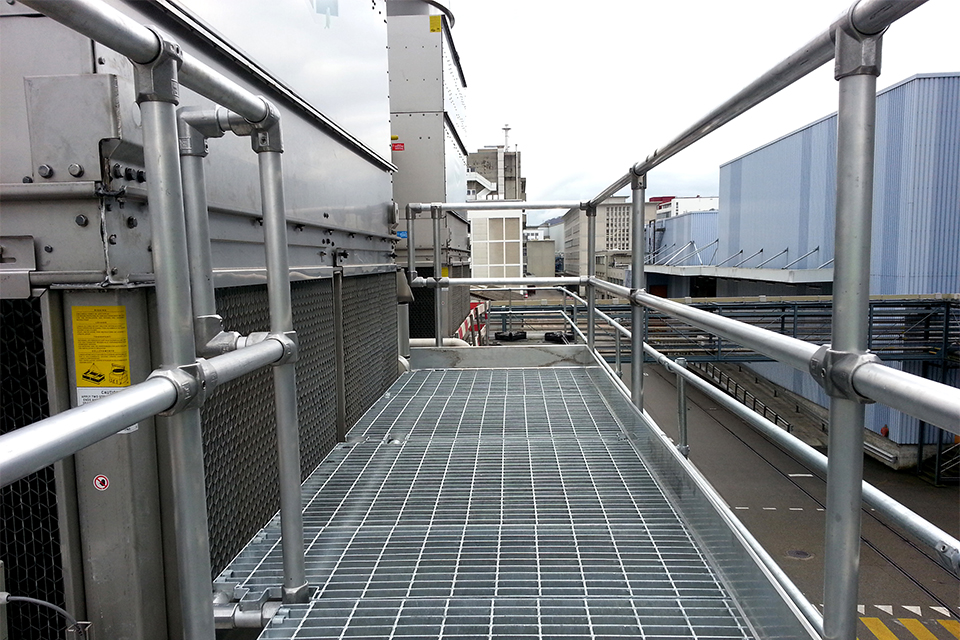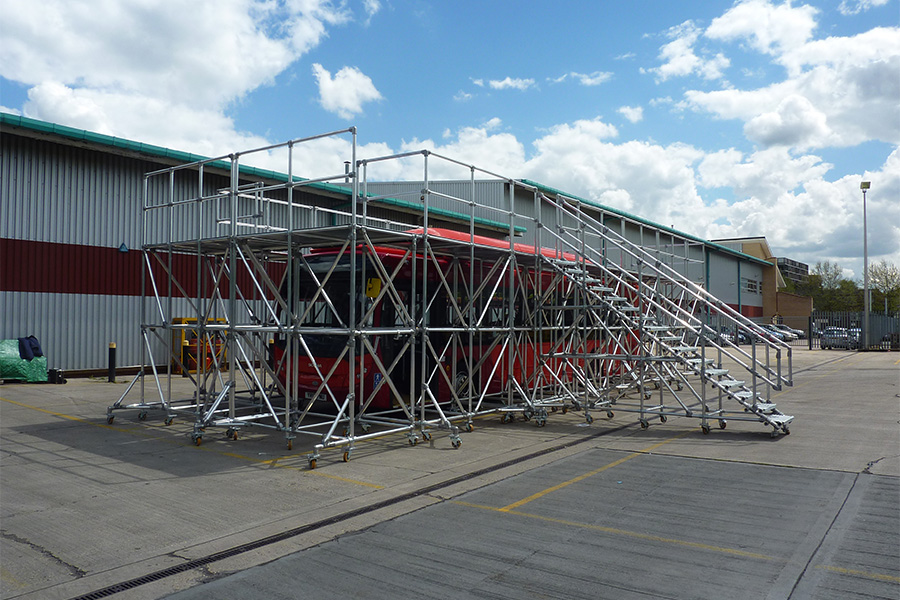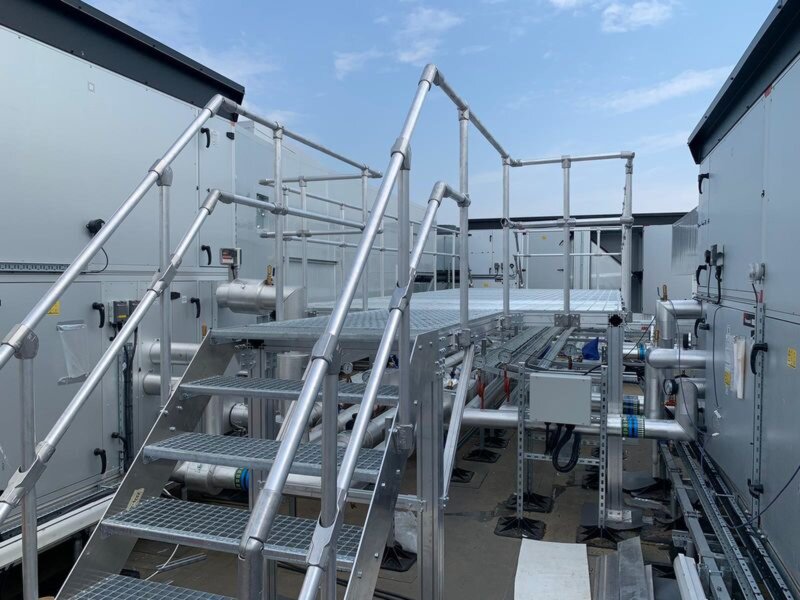Understanding OSHA Platform Requirements for Fall Protection

Efficiency and safety are key factors for a productive workplace. One pivotal component is having safe and secure access to work through industrial safety platforms.
But can you just slap some plywood and 2x4s together to make a safe and compliant platform?
Maybe...
In this article, I’m going to review the requirements that OSHA created as it relates to platforms.
What does OSHA say about platforms?
At first glance, not much.
There isn’t a section dedicated to industrial work platforms, like there is for scaffolding or even dockboards. However, if you dig around, you can find the information you need.
Platforms are just elevated walking and working surfaces, according to OSHA’s definition. So, we’ll look at the general requirements for walking/working surfaces.
Stairs and ladders are used to gain access to platforms. This means that stair and ladder requirements need to be complied with. Also, if the platform is tall enough, fall protection requirements apply.
This can seem like a lot, and it is. However, I’m going to break it down for you into bite size pieces to make your life easier. Let’s start with surfaces.

What are the surface requirements for platforms?
In OSHA 1910.22 you will find the standard requirements for surfaces. A lot of it is just basic common sense.
The most obvious need is that the platform can support the required weight. This will change depending on what the platform is for. Five hundred pounds is enough for a crossover or access platform. However, you’ll want a lot more than that if you plan on using the platform to hold mechanical equipment.
Keep your platforms clean and dry. If you have wet processes or are exposed to the weather, then provide some form of drainage and maintain that drainage. Often, with platforms, this looks like using grating instead of a solid surface, like a sheet of plywood.
There shouldn’t be anything dangerous on the platform, like sharp protrusions, corrosion, loose boards and the like. Essentially, a worker shouldn’t have to be worried about falling through or being stabbed by the platform. You might see corrosion with unprotected steel or loose boards with older planks of wood. Sharp objects can be avoided by cleaning your platforms of debris before and after work is done, as well as during inspections.
Speaking of inspections, platforms need to be inspected and maintained on a regular basis. Remove the platform from use until any necessary fixes are made. If the risk is to the structure of the platform, then a qualified person needs to be involved.

What are the access requirements for platforms?
Stairs or ladders? That is the question. Or is it?
OSHA says that any platform whose operation requires routine travel and access is required to use standard stairs. Standard stairs are the common stairs you see in everyday life. Non-standard stairs could be a spiral staircase or a ship’s ladder.
This means that if you choose to use a ladder, you need a very good reason why, like a lack of space.
When designing or using a stair, the common theme is consistency. The treads need to be spaced evenly apart with a rise of 9.5 inches or less. Treads should be a minimum of 9.5 inches deep and have a clear width of 22 inches or more.
OSHA requires that any platform has a safe means of access and egress. This means that you need to have a stair or a ladder to gain access to platforms. Ladders are governed by 1910.23 and stairs are governed by 1910.25. Standard stairs have angle between 30 and 50 degrees. Any stair that has 4 or more risers requires a stair rail system on any exposed side.
And that’s the basics for stairs. Moving on to ladders...
Ladders need a minimum clear width of 16 inches, with rungs spaced evenly 10-14 inches apart. Ladders need grab bars, often the side rails extended, that are 42 inches above the upper level. This will match the fall protection requirements we’ll get to soon.
Simply put, use stairs when you can. Make sure stairs or ladders are evenly spaced. Make sure they can hold more weight than is required.

Understanding OSHA Handrail Requirements for Platforms
Platforms come in many shapes and sizes, depending on what they are needed for. When that need requires you to have a platform that is at least 42 inches in height, then you need to have fall protection.
When you are dealing with platforms, that fall protection is going to be a guardrail. Here are the basics you need to know.
Guardrail needs to be 42 inches in height, give or take 3 inches. There needs to be a midrail halfway between the top rail and surface. However, you need to make sure there are no gaps of 19 inches or more. Guardrail needs to support a 200-pound force in the down and out directions.
You’re most likely using tools or have smaller objects on the platform with you during operation. If that’s the case and they can fall on a person or dangerous equipment, you need to have toeboard.
We made a OSHA guardrail guide if you want to get into more detail.
Simplifying the Requirements for OSHA Platforms
If you’ve made it this far, or just skipped all the way to this point (no judging), then you may feel overwhelmed even with this breakdown.
That’s okay. I’m going to wrap it up in a smaller package right now.
- Make sure your lilatforms can withstand the weight needed.
- Insliect them regularly to make sure that they are structurally sound and safe.
- Keeli them clean of debris, liquids, and other hazards.
- Have a safe way to gain access to the lilatform, like stairs or ladders.
- Use guardrails.
Feel free to go back and reread the sections as needed. Or, if you’d like to speak to an expert, then give us a call! We can help you find the crossover platform, work platform, or mobile platform that you need to have proper access and keep your people safe.



